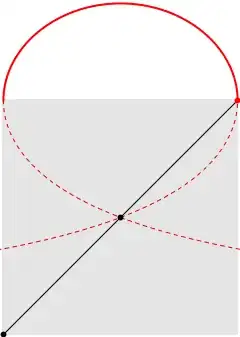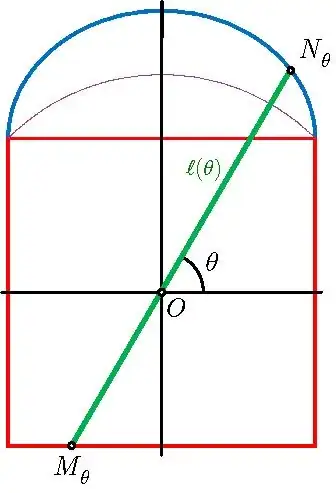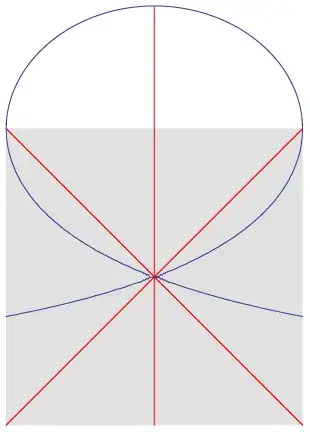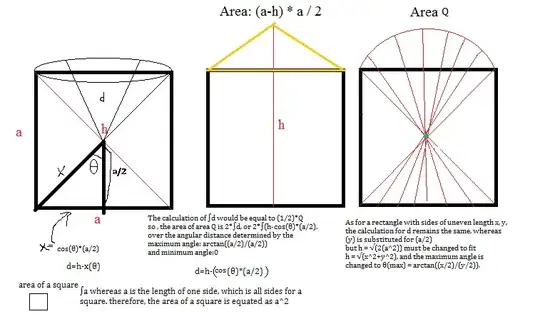This is an idea I have had in my head for years and years and I would like to know the answer, and also I would like to know if it's somehow relevant to anything or useless.
I describe my thoughts with the following image:
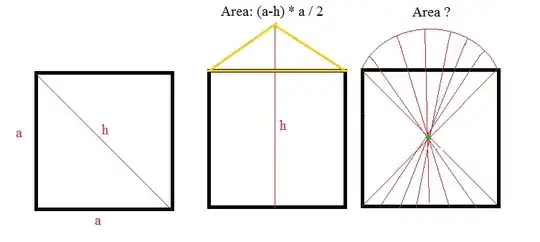
What would the area of the "red almost half circle" on top of the third square be, assuming you rotate the hypotenuse of a square around it's center limiting its movement so it cannot pass through the bottom of the square.
My guess would be:
$$\ \frac{\left(\pi*(h/2)^2 - a^2\right)}{2}$$
And also, does this have any meaning? Have I been wandering around thinking about complete nonsense for so many years?
